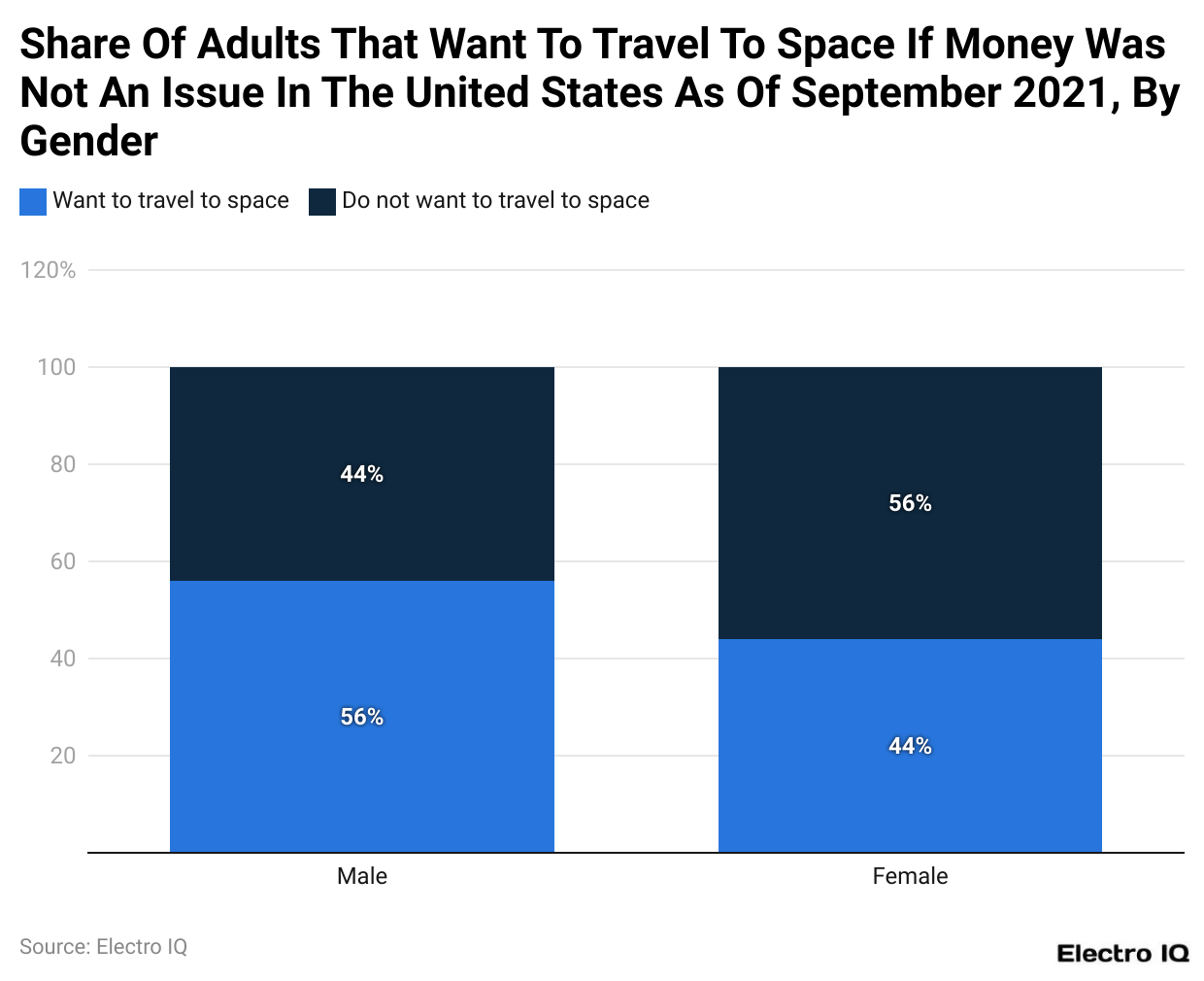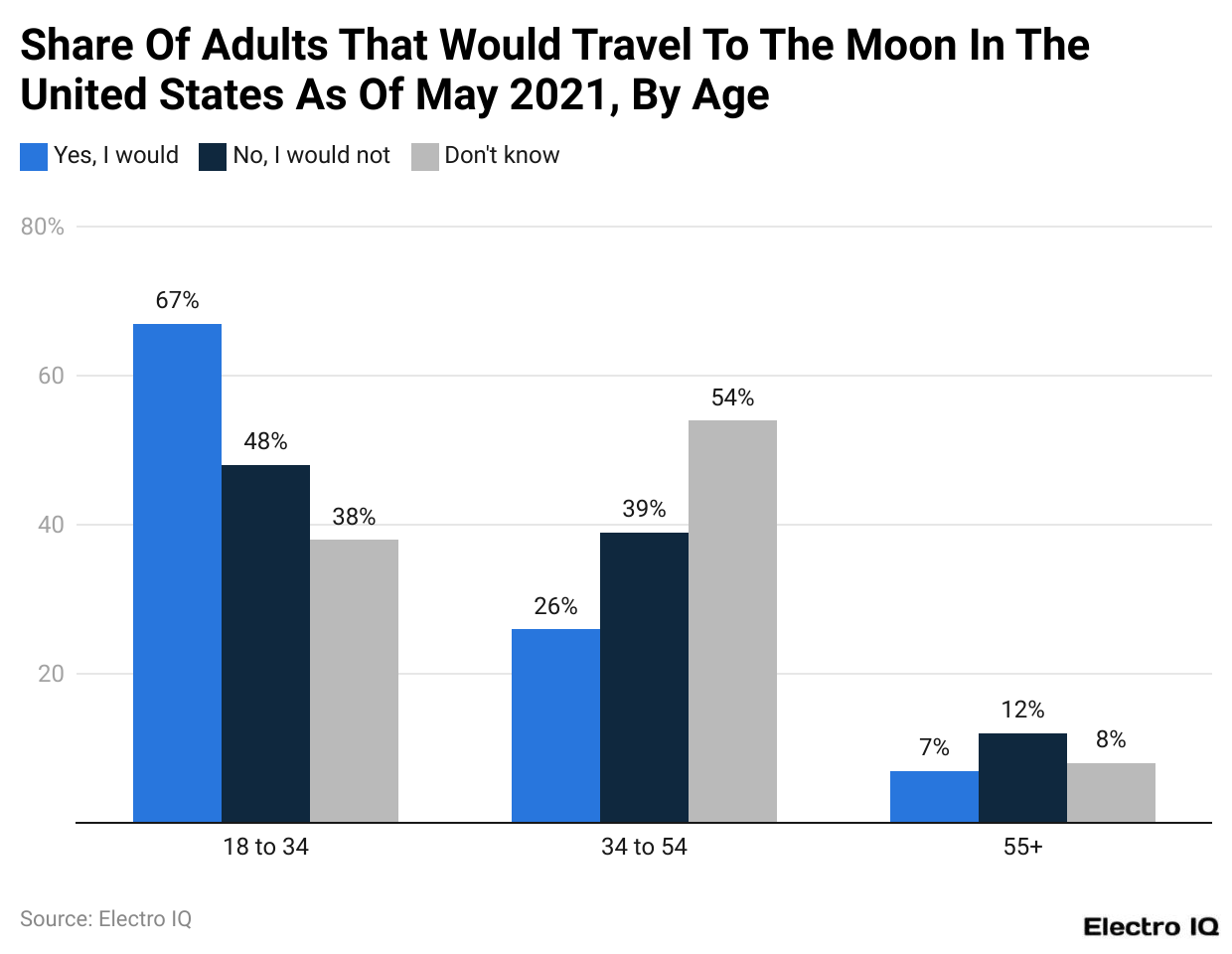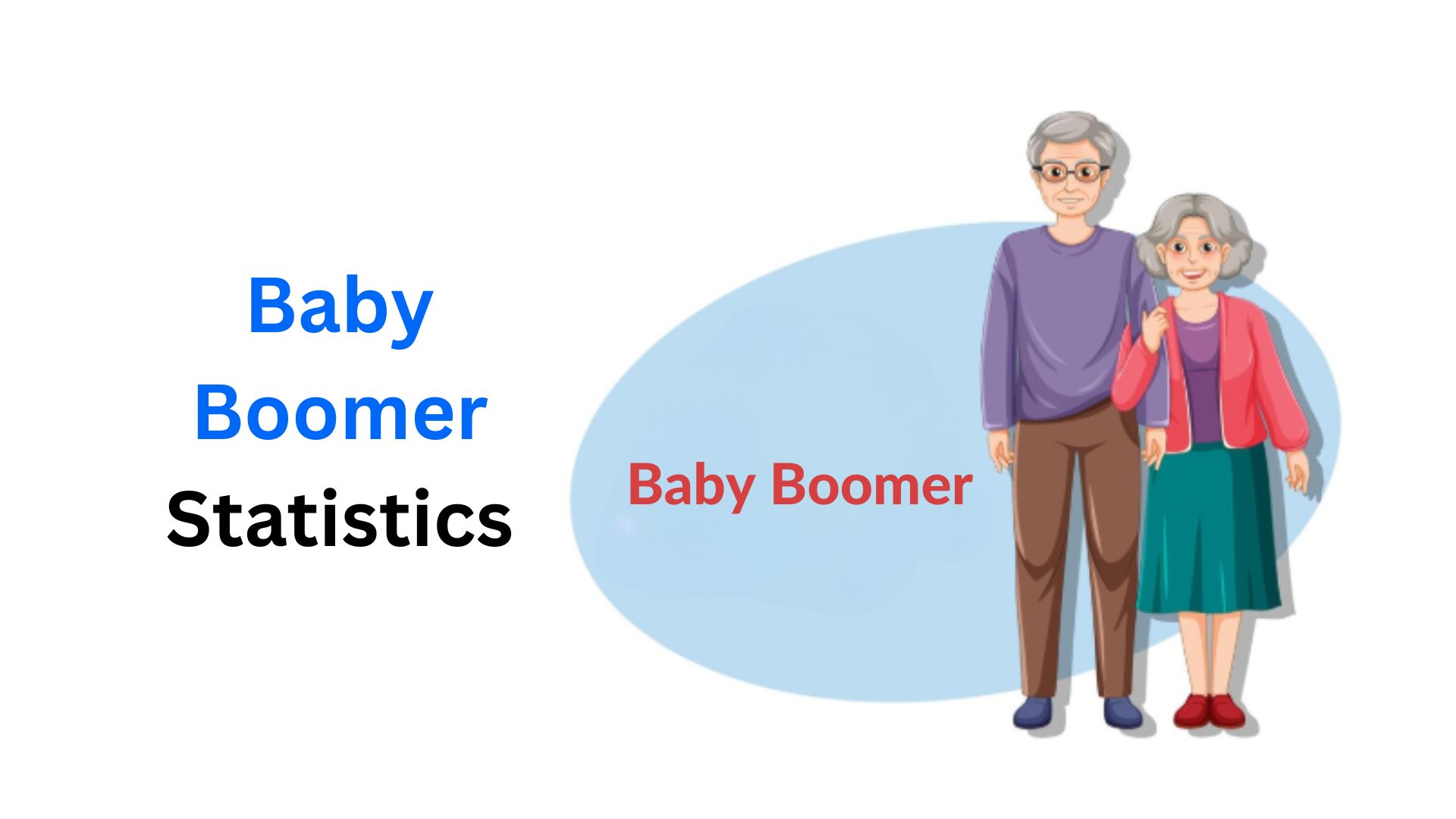Space Tourism Statistics By Market Size, Country, Age and Gender
Updated · Sep 25, 2024

Table of Contents
- Introduction
- Editor’s Choice
- Suborbital Space Tourism Market
- Orbital Space Travel Revenue
- Amount Invested In Space Tourism Companies By Venture Capitalists
- Equity Investment In Space Companies Worldwide
- Share Of Investment Deals Among Space Start-Ups
- Public Views on Leading Private Sector Space Companies by Age
- Public Opinion On Leading Space Companies
- Opinion On Desirability For Space Travel
- Public Views on the Profitability of Space Exploration Companies
- Opinion On Billionaire Spending Money On Space Travel
- Willingness To Travel In Space By Gender
- Public Willingness To Go To The Moon As A Tourist
- Public Willingness To Go To The Moon As A Tourist By Gender
- Share Of Respondents Will Travel To Moon By Age
- Share Of Adults Who Would Pay A High Amount To Travel In Space
- Space Tourism Overview
- Conclusion
Introduction
Space Tourism Statistics: Space tourism is a recreational travel mechanism. There are, for the most part, different types of tourism possible, namely orbital, suborbital, and lunar space tourism. Tourists are motivated mainly by the aspect of viewing Earth from space. Unlike other forms of tourism, space tourists are required to be physically fit to go to space.
For the most part, tourists must be trained to sustain high g force and centrifuge and weightlessness in high altitudes. As we go through the Space Tourism Statistics, one will get holistic information on this form of tourism.
Editor’s Choice
- Suborbital reusable vehicles market to reach USD 293.9 million by 2031.
- Orbital space travel revenue is expected to hit USD 555 million by 2030.
- Venture capitalists invested USD 12.9 billion in space companies in 2022.
- The USA leads with 46.5% of global equity investments in space companies.
- SpaceX holds a 30% share of investment deals among space startups.
- 53% of respondents consider SpaceX to be the private sector space race leader.
- 49% of Americans want to travel to space if money is not an issue.
- 65% believe space exploration companies will be profitable in the next decade.
- 59% think billionaires are entitled to spend money on space travel.
Suborbital Space Tourism Market

(Reference: Statista.com)
- The space tourism statistics showcase that suborbital tourism has a large market size and is expected to grow. It can be categorized into parabolic aircraft, High-altitude balloons, and Suborbital reusable vehicles.
- As of 2021, suborbital reusable vehicles have the highest market size, with $36.7 million, followed by parabolic aircraft, with $7.8 billion, totaling $44.5 billion.
- By the end of 2031, the suborbital space market is expected to experience a significant boom in its tourist market. Suborbital usable vehicles will have a market size of $293.9 million, followed by High-Altitude balloons at $58.9 million and parabolic aircraft at $43.8 million, totaling $396.6 million.
Orbital Space Travel Revenue

(Reference: Statista.com)
- The space tourism statistics show that the industry has grown significantly.
- While in 2021, the revenue of orbital space travel was $385 million, it increased to $460 million by the end of 2023.
- The space tourism market is predicted to have revenue of $555 million by the end of 2030.
Amount Invested In Space Tourism Companies By Venture Capitalists

(Reference: Statista.com)
- The amount invested by venture capitalists in space tourism companies serves as an essential metric for assessing the industry.
- Between the period (2013 – 2022), the highest amount of space tourism industry investment received was in 2018, with $24.19 billion.
- By the end of 2022, space tourism companies collectively received $12.9 billion in investment.
Equity Investment In Space Companies Worldwide

(Reference: Statista.com)
- The space tourism statistics showcase that the USA is the majority investor in equity in space companies worldwide, with 46.5% of the total investments.
- It is followed by China with 29.1%, Others with 8.3%, Singapore with 5.1%, UK with 4.4%, India with 2.8%, Indonesia with 2.6%, and France with 1.2%.

(Reference: Statista.com)
- Space tourism statistics showcase that Space X has the highest share of investments among space startups, with 30%.
- It is followed by Other start-ups at 20%, OneWeb at 14%, Blue Origin at 13%, Relativity at 7%, Virgin Galactic at 6%, CG Satellite at 5%, LandSpace at 2%, ispace at 2%, Kymeta with 2%.
Public Views on Leading Private Sector Space Companies by Age

(Reference: Statista.com)
- By going through the space tourism statistics, one can get a proper idea of the information about the space companies that are leading the private sector push into the space race.
- For all generations, Space X is the leader when respondents of different ages are asked which company they lead in the space race.
- Blue Origin is a distant second among the age groups when asked about their opinion of the leading space-based company.
Public Opinion On Leading Space Companies

(Reference: Statista.com)
- Going through the space tourism statistics, it is evident that Space X is the leader when it comes to a leading company in space tourism with 53%.
- Blue Origin follows it with 12%, Other with 11%, No Answer with 9%, Boeing with 8%, and Virgin Galactic with 7%.
Opinion On Desirability For Space Travel

(Reference: Statista.com)
- The space tourism statistics show that there is a diverse opinion about the demand for space travel.
- 51% of respondents don’t desire to travel to space, while 49% want to if money is no issue.

(Reference: Statista.com)
- Space tourism statistics show that most respondents feel space tourism will be beneficial in the future.
- As we review the graph, we see that 65% of respondents feel space tourism will be profitable in the next decade, 31% feel it is not likely, and the remaining 4% don’t have a definite opinion.
Opinion On Billionaire Spending Money On Space Travel

(Reference: Statista.com)
- Looking at the space tourism statistics, 59% of respondents feel that billionaires have the freedom and are entitled to spend their money on space travel.
- In contrast, 41% of respondents feel that billionaires should not spend money on space travel.
Willingness To Travel In Space By Gender

(Reference: Statista.com)
- Space tourism statistics show that 56% of male and 44% of female respondents wish to travel in space if it were affordable.
- In contrast, 44% of male and 56% of female respondents don’t wish to travel in space.
Public Willingness To Go To The Moon As A Tourist

(Reference: Statista.com)
- Going through the space tourism statistics, the public perception of willingness to go to the moon can divided into the following age categories: Gen Z, who are 24 and under, Millennials who are 25 to 40; Gen X, who are 41 to 56, Boomers who are 57 to 75, Silent who are 76+.
- Among the different categories, Genz has the highest willingness to travel to the moon as a tourist, with 55% approval.
- In contrast, boomers have the highest disapproval rate of traveling to the moon as tourists, at 78%.
Public Willingness To Go To The Moon As A Tourist By Gender

(Reference: Statista.com)
- As per the space tourism statistics, 45% of male respondents are willing to go to the moon if the travel is affordable, compared to 29% of females who would go to the moon as tourists.
- In contrast, 68% of female respondents don’t wish to go to the moon, compared to 54% of male respondents.

(Reference: Statista.com)
- Going through the space tourism statistics, it is evident that willingness to travel to the moon, when classified by respondents’ ages, could be classified into the following: 18-34, 45 to 54 and 55+.
- In the generation of 18 to 34, 67% of respondents have shown a willingness to travel to the Moon if money was not an issue.
- In the generation aged 35 to 54, a majority of 54% of respondents need clarification on their willingness to travel.
- For the generation of 55%, a majority of 12% of respondents don’t want to travel to the moon.

(Reference: Statista.com)
- When it comes to travel, $100k is a high amount.
- As per the space tourism statistics, 81% of respondents are not willing to pay more than $100k to travel to space, while in contrast, 19% would prefer to travel by paying more than $100k as travel expenses.
Space Tourism Overview
Space tourism is a growing industry that involves taking passengers into space for leisure or commercial purposes. The idea of space travel for tourists has been around for years, but it is only recently that it has begun to take shape as a commercial reality. Companies like SpaceX, Blue Origin, and Virgin Galactic are leading the way in making space tourism accessible. The keyword “Space Tourism Statistics” will help us understand how this market has evolved, especially in the years 2023 and 2024.
Space Tourism in 2023
In 2023, the space tourism market witnessed significant growth. Virgin Galactic launched its first commercial space flight, taking six passengers into space at a ticket price of approximately $450,000 per person. This marked a significant milestone in the space tourism industry. SpaceX also continued its private astronaut missions, with five civilian spaceflights in 2023. The company’s missions are priced much higher, with a single ticket costing around $55 million US dollars. This high cost reflects the complexity and duration of SpaceX’s trips, which involve multiple days in space.
According to estimates, the global space tourism market in 2023 was valued at approximately $1.2 billion US dollars. Most of this revenue came from the suborbital space flights offered by companies like Virgin Galactic and Blue Origin, whose flights allow passengers to experience a few minutes of weightlessness and a view of Earth from the edge of space. The orbital segment, dominated by SpaceX, accounted for the rest of the revenue but had a smaller number of participants due to the higher cost.
Growth in 2024
Looking ahead to 2024, the space tourism market is expected to grow further. Virgin Galactic plans to increase its flight frequency, aiming to conduct monthly commercial spaceflights by the second half of the year. This would significantly increase the total number of passengers. As for pricing, Virgin Galactic has indicated that ticket prices may rise slightly, possibly reaching $500,000 US dollars per person.
Blue Origin, which also offers suborbital flights, is expected to follow a similar path, with more frequent launches and an increase in its customer base. The company’s ticket prices have remained more private, but estimates suggest they are around $250,000 to $300,000 US dollars per person.
On the other hand, SpaceX is looking to expand its orbital flights. The company has announced that it plans to offer more advanced missions in 2024, including private trips to the moon, which are likely to cost hundreds of millions of US dollars. These missions are aimed at ultra-high-net-worth individuals and corporations.
By 2024, the total market size for space tourism is forecasted to reach $1.8 billion US dollars, reflecting a growth rate of approximately 50% compared to 2023. Much of this growth will be driven by the increasing number of suborbital flights and new entrants into the market. Several start-ups and international companies are also exploring the possibility of launching space tourism services, which could further increase competition and drive down prices in the long term.
Market Demand and Challenges
The demand for space tourism continues to grow, with a long waiting list of passengers for companies like Virgin Galactic. As of 2023, over 800 people had reserved tickets for future flights. The growing interest in space tourism is primarily driven by wealthy individuals who are seeking unique and exclusive experiences.
However, some challenges could slow down the growth of this market. One of the main challenges is the high cost of space tourism. Although companies are working to reduce prices, space travel remains unaffordable for most people. Additionally, technical risks are involved, such as the safety of passengers during spaceflights. Any accidents or malfunctions could severely impact the industry’s reputation and slow down progress.
Another challenge is the regulatory environment. Governments are still developing regulations for commercial space travel, and any delays in this process could affect the timeline for new space tourism services. For example, companies need to ensure that their spacecraft meet safety standards, which can be time-consuming and expensive.
Future Outlook
Despite these challenges, the future of space tourism looks promising. Companies are investing heavily in research and development to make space travel safer, more affordable, and more accessible. In the long run, the industry has the potential to expand beyond wealthy individuals to include middle-income consumers. Some experts predict that space tourism could become a multi-billion-dollar industry within the next decade, with ticket prices falling to under $100,000 US dollars as more companies enter the market and competition increases.
Keeping track of “Space Tourism Statistics” is crucial for understanding the industry is direction. In 2024, we expect to see more detailed data on the demographics of space tourists, including their age, gender, and nationality. This will help companies tailor their marketing efforts and develop packages that appeal to a broader audience.
Conclusion
Space tourism has emerged as an industry and has become one of the most popular industries, capturing the attention of investors and customers alike. According to space tourism statistics, the suborbital space tourism market is expected to expand from $44.5 billion in 2021 to $396.6 million by 2031, with suborbital reusable vehicles leading the charge.
However, the high cost of travel remains a point of concern, as only a small portion of adults are willing to pay a hefty amount for space travel.
FAQ.
Space tourism refers to recreational travel to space, including orbital, suborbital, and lunar tourism.
Prices vary widely, from about $250,000 for suborbital flights to $55 million for orbital missions.
According to public opinion, SpaceX is the leader of the private-sector space race.

Joseph D'Souza founded ElectroIQ in 2010 as a personal project to share his insights and experiences with tech gadgets. Over time, it has grown into a well-regarded tech blog, known for its in-depth technology trends, smartphone reviews and app-related statistics.










